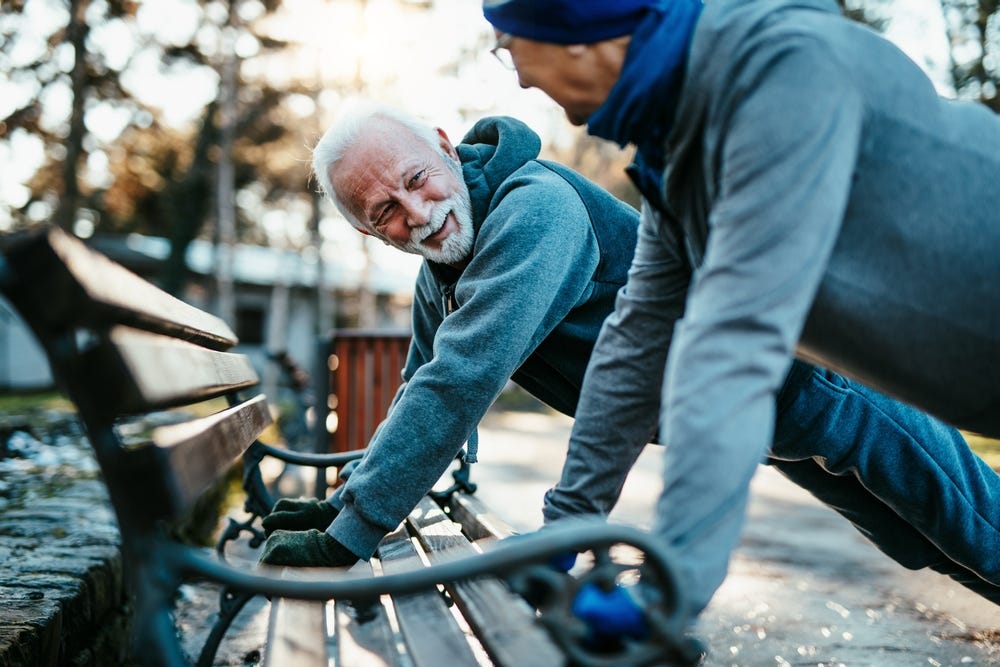“Age-appropriate” sounds helpful, right? It’s a nice way to package the idea that as we age, we need to scale back—lighten the load, take it easy. But that advice isn’t always helpful.
It leads to watered-down workouts, generic advice, and lower expectations, which is exactly when you need something better.
Age ≠ Ability
Here’s the thing: chronological age tells us almost nothing about what your body can actually do. I’ve worked with people in their 60s who move better, train smarter, and recover faster than some in their 30s. The difference isn’t age—it’s ability, training age, and capacity.
Training age matters just as much as chronological age. It tells us how long you’ve been training consistently, not just "doing" the movements, but training for them. Whether you've been practicing yoga for 10 years or lifting for 5, that consistent, deliberate effort builds your foundation.
Capacity, on the other hand, is how much your body can handle (how big is your engine?), how much it’s able to do and recover from. With a bigger engine you can run faster, longer, and more efficiently—and so can your body when you've spent years building up its capacity. This capacity gives you the ability to go farther, push harder, and recover faster.
Training Age: The Missing Piece
Training age plays a key role. If you’ve been actively training—whether strength, endurance, or sport—your ability to perform today will look different from someone who’s just starting out. Your training age is a reflection of how long you've been working on your capacity and skill.
We also look at health history to assess your current health status, risks, and considerations when starting or changing your exercise program. But training age and capacity are what tell us what you’re capable of today—regardless of your age.
Train for What You Can Do — Not How Old You Are
When developing a physical practice, we don’t start with your age. We start with:
What you can do now
What needs work
What’s sustainable
What moves you forward—not burns you out
This is what effective training in the second half of life looks like. It’s not about “age-appropriate.” It’s about you-appropriate—and that includes understanding your training age and building capacity.
The Problem with “Age-Based” Workouts
Most “age-appropriate” advice:
Oversimplifies everything
Ignores your actual capacity and training age
Focuses more on limitations than potential
Keeps you stuck doing the same movements forever
Let’s call it what it is: a way to lower the bar without looking like we are.
A Better Way: Ability-Based Training
Here’s what we focus on instead:
Start where you are (consider your training age and capacity)
Build skill (move beyond your comfort zone)
Expand your ability (gradually and safely)
Increase capacity (so you can do more, faster, longer—at your pace)
Recover well (and adapt over time)
Repeat (adjust as you go)
That’s how you create a physical practice that evolves with you and helps you live stronger, longer.
Final Thought
You don’t need “gentle” or “safe” or “easy” because of your age.
You need smart.
You need consistent.
You need intentional.
And you need a plan that considers your history, current ability, training age, and capacity—and moves you forward. Because it’s not about how old you are.
It’s about what you’re capable of becoming.
Ready to Bust the Myth?
If you're ready to break free from the confusion and discover what real (your) age-appropriate exercise looks like, let’s find your sweet spot.
Find Your Sweet Spot with a 2-Week QuickStart
If you're ready to stop bouncing between extremes and want to find a balanced approach to building lasting strength, my 2-Week QuickStart could be just the thing. This coaching is designed to help you start right. To develop a sustainable physical practice—one that adapts to your body, addresses your needs, and doesn’t ask you to jump in full throttle. It’s a chance to build momentum, discover the right “dose” of intensity for you, and set the foundation for long-term strength and health.
By the end of these two weeks, you’ll have anchored new habits, cleared the mental clutter of “what should I do today,” and developed a practice that you can actually stick with. No more extremes. Just smart, consistent progress.
Are you ready to break free from the confusion and start moving in the right direction? Let’s have a conversation and see if the 2-Week QuickStart is right for you to begin your journey toward a stronger, longer life.
Message me for more information.
Here with you for the second half—Jeff
PS.
If someone you know is stuck at the expense of progress—forward this to them.
Strength is better when it’s shared.


